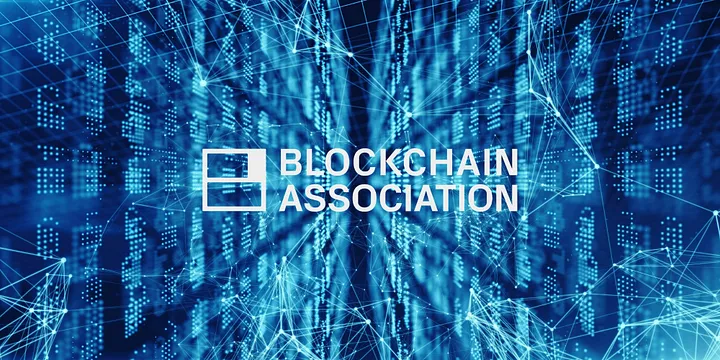The US has always been and must continue to be, at the forefront of digital innovation. However, regulatory uncertainty is standing in the way of innovation regarding public blockchain technology and tokenized open-source software. We need new policies to lay the foundation for a new Internet: digital infrastructure supporting creativity, prosperity, privacy, and security. With regulatory clarity enacted, our online and offline worlds will improve.
Why do we need a “new Internet”?
There’s no question that the global web and the ubiquity of connectivity and computers are a force for good that has revolutionized our lives over the past 25 years. We are endlessly inspired by its ability to connect people, enable commerce, and catalyze innovation. Its inventors and early proponents could never have predicted that the Internet would permeate every aspect of our lives, providing the framework for everything from global business transactions to social networking to self-driving cars.
However, as the revolutionary technologies of the last decades have permeated all sectors of industry, so have their vulnerabilities and shortcomings, mainly when deployed without due care at scale. We use networked systems to control or safeguard sensitive and dangerous assets and information — indeed, almost every system on earth — but it’s vulnerable to attack, error, censorship, and failure. Most notably, we’ve seen increasingly catastrophic data breaches, and these are happening because current technical approaches were not built, contemplating the scale and scope they now achieve and are struggling to meet daily challenges. The Marriott and Equifax breaches provide tangible examples; large corporations relying on centralized databases are vulnerable to a single point of failure. And they are not alone. Almost every private information related to you — your bank details, identity, work, medical records, email, search history, and photographs — is held similarly.
Now, perhaps more than ever, we rely on and trust centralized institutions to help us connect, share, and do business, and those without access to these institutions cannot fully engage in the digital world.
The new Internet, constructed by teams of scientists and engineers worldwide using blockchain technologies, reduces these dependencies and vulnerabilities. These teams create a more secure, decentralized, productive, democratic, and pro-innovation infrastructure.
How does it work?
Open blockchain technology ensures no single point of failure or weakness in a system by building it on a shared network between many computers. Every time a piece of information needs to change — money is sent, a file is updated, land ownership changes — every computer on a blockchain network has to agree to this change under a predefined set of rules. This makes it nearly impossible (or at least prohibitively expensive) for any single party to falsify, delete, or corrupt information on a blockchain. A vast, shared, decentralized web has replaced the central access point.
That’s what makes the new Internet more secure and resilient. But what makes it exciting is the potential for all of us to connect and share directly through it without intermediaries. In essence, the new Internet is a digital reflection of a real-world, face-to-face interaction: you can hand someone cash, tell them an idea, work with them on a project, and keep something safe for them without having to involve (or pay for, or watch ads from) the institutions upon which you were previously forced to rely. Instead, all of your interactions are protected and guaranteed by the blockchain.
To most people, blockchain is best known as the technology that supports cryptocurrencies. But blockchain’s real innovation solves inherent problems with open, permissionless networks that couldn’t be solved before. These digital units of account have vast potential to create an open financial system, as well as open protocols in various sectors. The applications of blockchain technology are by no means limited to cryptocurrencies.
What role do tokens play in this?
Tokens fuel public blockchain technology because they incentivize unaffiliated individuals to operate or transact within networks that otherwise require centralized oversight. In other words, tokens replace the management function of an organization. They incentivize network effects and certain beneficial behaviors on decentralized peer-to-peer networks. For the potential of the new Internet to be realized, we need tokens.
The problem, until now, has been in defining, tracking, and taxing tokens. Although many tokens share the valuable traits of cryptocurrencies, like bitcoin and ether, tokens can also represent a broader and more dynamic concept of value exchange. In the new Internet, we want to be able to use tokens as payment for web applications and services, as incentives to create and use open-source platforms, as a unit of account within a voting scheme, and as a means to send value to one another.
There are challenges associated with this — especially with that last point. When is a token simply lines of code within open-source software, and when is it security? How can we prevent the unscrupulous creation and trading of these tokens? How can we ensure that tokens used for asset-converting or capital-raising are not confused with tokens used for exchanging value within open blockchain systems? We need to agree upon and enforce these definitions at a national level.
What’s next?
The challenge before the blockchain ecosystem is ensuring we have the legislation and regulation to encourage legitimate, exciting blockchain-based innovation here in the US while protecting the system from bad actors. This is not a debate that will be resolved overnight. Still, it’s a conversation we need to have — for both individuals participating in the industry and consumers benefiting from its services.
The Blockchain Association exists to work with policymakers on issues such as this. With the new year and a new Congress just around the corner, we are excited to continue conversations — and start new ones — with members of Congress, their staff, regulators, and others in the policymaking community. We look forward to the discussion and debate.





